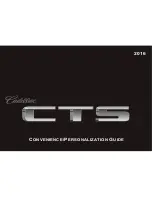
D
Inspect valve stem end face for pitting and wear. If pitting or wear
is found there, valve stem end may be resurfaced, but not so
much as to grind off its chamfer. When it is worn so much that
its chamfer is gone, replace valve.
D
Seating contact width:
Create contact pattern on each valve in the usual manner, i.e.,
by giving uniform coat of marking compound to valve seat and
by rotatingly tapping seat with valve head. Valve lapper (tool
used in valve lapping) must be used.
Pattern produced on seating face of valve must be a continuous
ring without any break, and the width “a” of pattern must be within
specified range.
D
Valve seat repair:
A valve seat (2) not producing a uniform contact with its valve or
showing width of seating contact that is out of specified range
must be repaired by regrinding or by cutting and regrinding and
finished by lapping.
1. EXHAUST VALVE SEAT: Use valve seat cutters (1) to make
two cuts as illustrated in figure. Two cutters must be used: the
first for making 15
_
angle, and the second for making 45
_
angle. The second cut must be made to produce desired seat
width.
Seat width for exhaust valve seat:
1.1 – 1.3 mm (0.0433 – 0.0512 in.)
ENGINE MECHANICAL
6A1-43
SH410
Standard seating width revealed
In
1.1 – 1.3 mm
by contact pattern on valve face
Ex
(0.0433 – 0.0512 in.)
















































